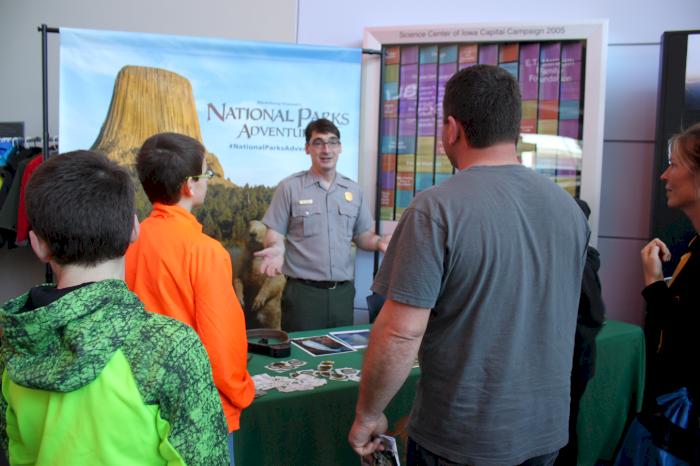Volunteer Spotlight: SCI staff share their talents through animal rescue, theatre and more
- Thursday April 28 2016
- Volunteer Spotlight
In her free time, SCI Programs Coordinator and pet foster mom Bridgett Harvey transports Boston terriers to their forever homes. Though the drives can be long and the goodbyes are always tough, she takes comfort in finding new homes for pets with troubled pasts.
SCI staff volunteer for a variety of local nonprofits, sharing their time and (sometimes hidden) talents. Volunteers off all ages over diverse perspectives and support SCI’s mission through their contributions to special events, daily programming, Summer Camps and more. Staff return the favor through their own volunteer endeavors with animal rescue, theatre, education and more.
We sat down with Bridgett, Programs Coordinator Maddie Mardesen and Box Office Coordinator Stacie Stearns to learn more about their volunteer work in the Des Moines metro.
Bridgett connects pets with permanent homes
Besides sharing her home with foster dogs, Bridgett volunteers with Animal Lifeline of Iowa, where she helps cats learn to socialize and play before they meet their own forever families. An avid Maker, Bridgett shares her latest pet projects and treats at a craft show every year and donates all the proceeds to Animal Lifeline of Iowa.
“I feel passionate about that rescue, specifically, since they do a lot of good work with puppy mills and re-homing dogs that have had a hard life or have been in a cage forever and don’t know how to act like a dog again,” Bridgett said.
Maddie shines behind the scenes and on stage
She’s on stage at SCI with snakes, salamanders and, of course, our Blue-Haired Friend Stuffee. But in her spare time, Maddie works behind the scenes as a volunteer stage manager at the Des Moines Playhouse and Tallgrass Theatre Company in West Des Moines.
She’s the assistant stage manager for Tallgrass’ upcoming production of “Children of a Lesser God.”
Stacie: anthropology, animals and the Arthritis Foundation
Stacie recently took on several new volunteer projects, including National History Day in April.
An anthropology grad, she judged 6th – 8th grade history projects at the regional event sponsored by the Iowa Department of Cultural Affairs. With submissions ranging from websites to theatre productions to films, Stacie said she was excited to experience her first National History Day complete with a variety of projects.
“I was pretty stoked to see what the students created,” she said.
Besides volunteering at the Arthritis Walk with her family every year, Stacie also recently joined the Animal Rescue League’s volunteer program.
“I’m excited for these new adventures,” she said.


